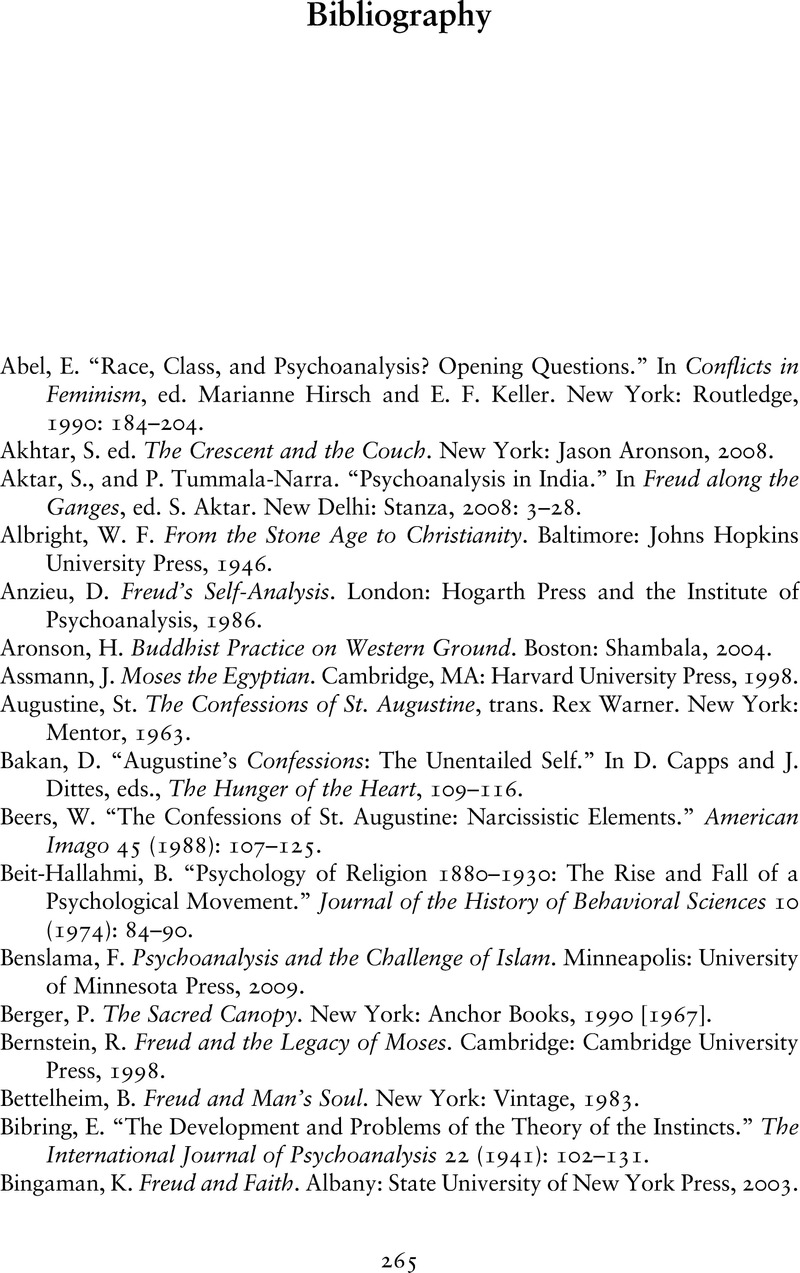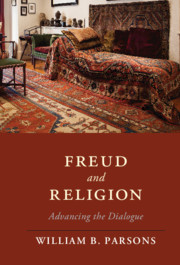Book contents
- Freud and Religion
- Cambridge Studies in Religion, Philosophy, and Society
- Freud and Religion
- Copyright page
- Contents
- Introduction
- 1 Why Freud Wrote on Religion
- 2 Totem and Taboo
- 3 Freud’s Moses
- 4 Future of an Illusion
- 5 Civilization and Its Discontents
- 6 Freud and Eastern Religions
- 7 Psychoanalysis and Religion beyond Freud
- 8 Revisions and Applications
- Conclusion
- Bibliography
- Index
- References
Bibliography
Published online by Cambridge University Press: 07 May 2021
- Freud and Religion
- Cambridge Studies in Religion, Philosophy, and Society
- Freud and Religion
- Copyright page
- Contents
- Introduction
- 1 Why Freud Wrote on Religion
- 2 Totem and Taboo
- 3 Freud’s Moses
- 4 Future of an Illusion
- 5 Civilization and Its Discontents
- 6 Freud and Eastern Religions
- 7 Psychoanalysis and Religion beyond Freud
- 8 Revisions and Applications
- Conclusion
- Bibliography
- Index
- References
Summary

- Type
- Chapter
- Information
- Freud and ReligionAdvancing the Dialogue, pp. 265 - 272Publisher: Cambridge University PressPrint publication year: 2021



